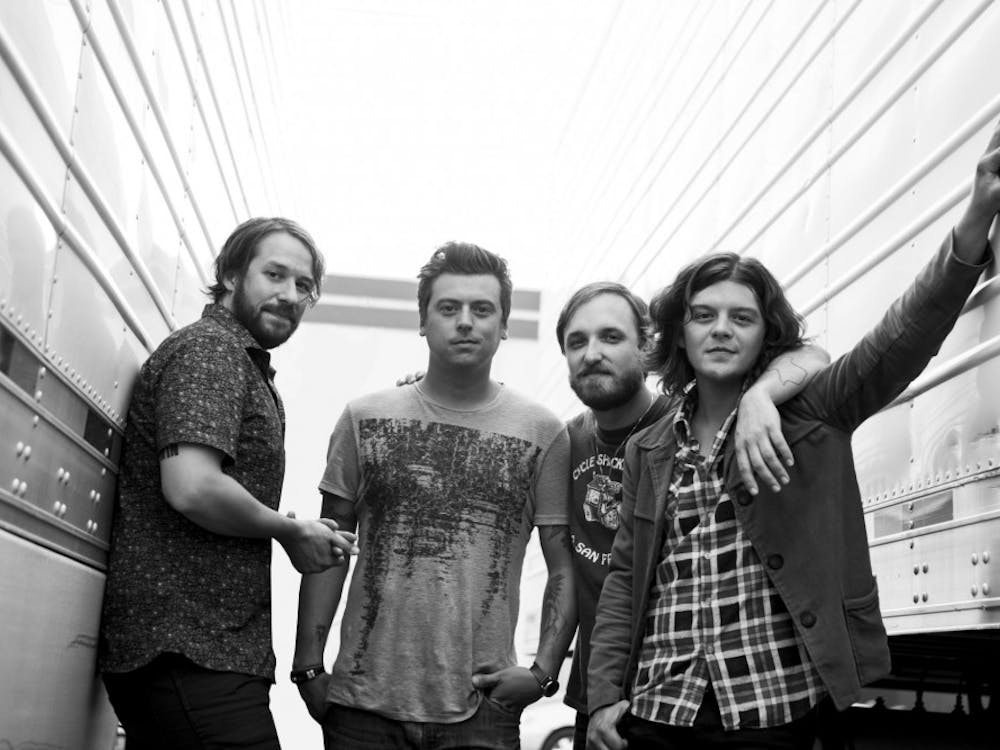Moreau Center plunge explores Native Alaskan culture over spring break
By Lisa McMahan & Roya Ghorbani-Elizeh
With plates of food balanced on our laps, we watched a group of high-school aged students sing, dance and play instruments in a dim room. Between songs, they joked around and laughter echoed off the walls of the old building.
It might not sound like an extraordinary experience, but let us elaborate.
The students were Tlingit Native Alaskans demonstrating their native dances and showcased their traditional regalia and instruments. And the food on our laps? Mounds of red herring eggs clinging to cedar branches.
We slathered the giant caviar with butter and those of us who didn't thoroughly enjoy the delicacy managed to pass it off to other unsuspecting UP students on the Native Alaskan plunge.
It wasn't exactly Vegas, but heading north for spring break proved to be a very rewarding trip for the 18 students and faculty members (or "plungers," as we sometimes referred to ourselves) who spent the week in Juneau and Sitka, Alaska.
The main purpose of our Moreau Center plunge was to experience Native Alaskan culture and the problems they face today as a result of the loss of their way of life. More than 200 of the 500 federally recognized Native American tribes are Alaskan, including the Tlingit tribe, which is located in Southeast Alaska.
Tlingit, which simply translates to "the people," is a tribe split into two different moieties, or groups - the ravens and the eagles. Each moiety is divided into different clans and houses, all bearing animal names.
We stepped off the plane in Juneau and were greeted by the first of many (stuffed) bear encounters throughout the trip. While many of us were still tired from a stressful week of mid-term exams and papers, all of us were ready to learn and experience life in the Tlingit tribe.
We took an overnight ferry to Sitka, where we spent three days before returning to Juneau for the remainder of our week-long immersion. A few brave souls endured frigid temperatures to sleep outdoors on the upper deck of the ferry in an effort to experience Alaska's natural beauty and see the marine life that allegedly appeared with the sunrise.
In Sitka, we had the pleasure of learning from Fr. Michael Oleksa, a Russian Orthodox priest who is an expert on the history of Alaska. Having been adopted into the Tlingit tribe years ago, he has a passion for all things Tlingit.
Fr. Oleksa took us on a whirlwind tour through the tiny town, weaving together the history of the tribe as it related to Russian settlers in Southeast Alaska.
A woman from an organization called Sitka Against Family Violence (SAFV) told us that Fr. Oleksa is "basically a rock star" in Southeast Alaska. We could not walk down the streets of Sitka without residents recognizing and greeting Fr. Oleksa - some residents even left work to hear him speak about the history of their land.
One incredibly turbulent plane ride later, we arrived in the bustling capital city of Juneau. Home to more than 30,000 Alaskans, it felt metropolitan after spending over three days in Sitka, a town of 9,000 residents.
Our days were packed with activities ranging from touring a hospital to serving lunch at a homeless shelter to hiking with the Sitka Conservation Society. Because our group included students with different majors and ages, the opportunities provided us with information on each of our varying interests, including health care, business and environmental studies.
One major theme that resonated with us was the hospitality offered by the Alaskan people to our giant group from "down south." On our final afternoon in Alaska, we were treated to a surprise salmon cookout in historic Auke Bay. The weather was blustery and freezing, so we huddled around a fire and listened to Tlingit storytelling and poetry. We were also able to hike around the bay and see where some of the Tlingit people used to live.
On our final evening in Juneau, we took the concept of a plunge to a whole new level. With the help of several gracious towel-holders and photographers, the rest of us clambered over the rocky shores to plunge into the freezing Pacific Ocean.
Despite the chaos that comes with traditions like these (and despite the fact that some of us who shall remain nameless only waded in up to their knees), the "polar plunge" was an experience we will never forget.
Arriving back in Portland late Saturday evening was a bittersweet ordeal. While happy about having the luxuries of life (Taco Bell) returned to us, we were saddened to see our adventure come to a close. Looking back on the experience, we realize that the trip exceeded our expectations, even though we froze our butts off.
We came back to the "lower 48" with new friends, a new respect for the environment and a new outlook on Native Alaskan culture. Gunalchéesh (thank you in Tlingit), Alaska!







